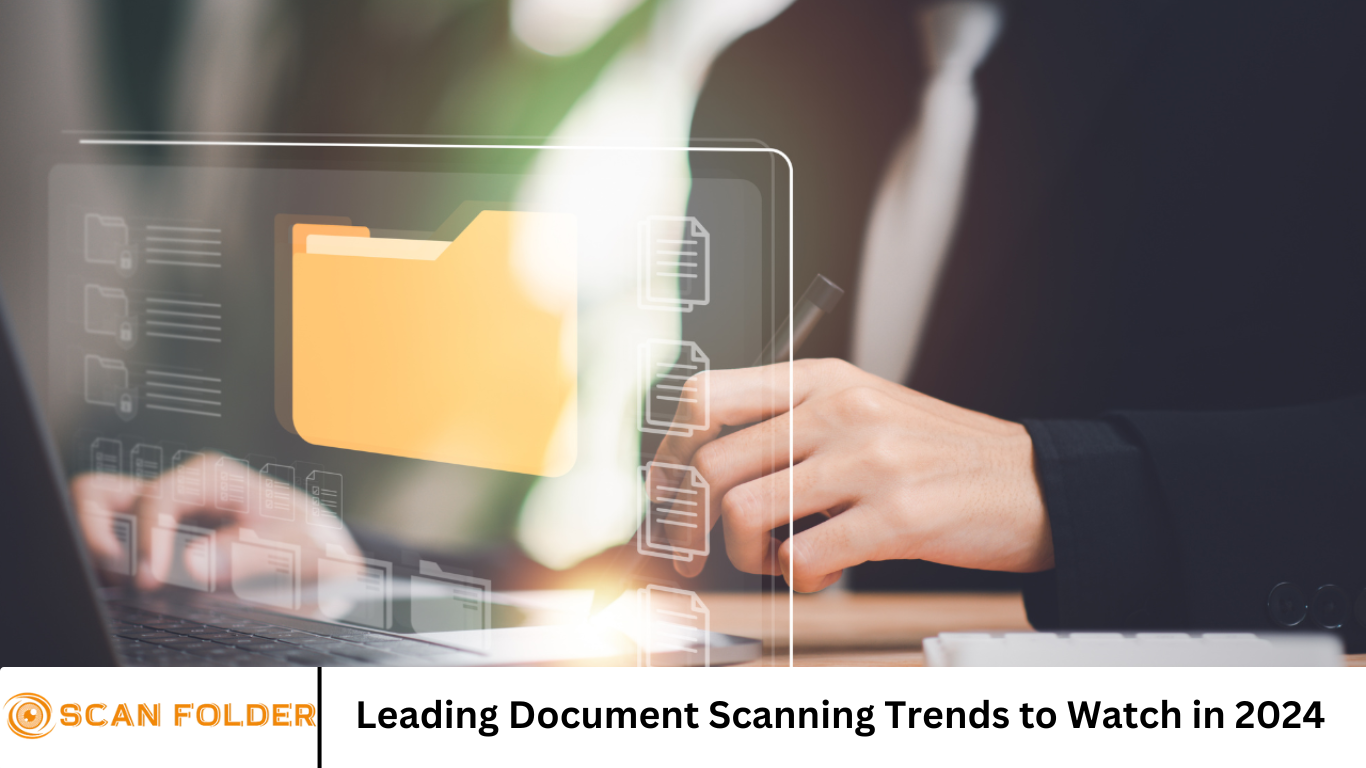Fast-paced digital landscape, document scanning remains a critical technology for businesses and individuals striving to streamline workflows, enhance security, and improve accessibility. As we step into 2024, document scanning is no longer just about digitizing paper:
it’s about leveraging cutting-edge technology and innovative trends to transform document management completely. This article explores the leading document scanning trends to watch in 2024, highlighting how these trends will shape business operations, improve compliance, and deliver better user experiences.
Whether you’re a business leader, IT professional, or digital transformation enthusiast, understanding these trends will help you stay ahead in the rapidly evolving document management space.
1. AI-Powered Document Scanning and Recognition
Artificial Intelligence (AI) continues to revolutionize the way documents are scanned and processed. In 2024, AI-powered Optical Character Recognition (OCR) and Intelligent Document Processing (IDP) will become more sophisticated and widely adopted.
How AI Enhances Document Scanning
Traditional scanning involves converting paper into digital images, but AI goes beyond by automatically extracting relevant data, classifying documents, and verifying information accuracy. This reduces manual data entry, speeds up workflows, and lowers human error risks.
Key benefits include:
- Automated data extraction: AI identifies and captures key information, such as names, dates, invoice numbers, and more.
- Smart classification: Documents are categorized automatically based on their content.
- Enhanced accuracy: AI models improve over time, reducing the need for manual corrections.
Leading document scanning software providers are integrating AI-powered features, making it easier for organizations to digitize complex documents like contracts, invoices, and forms with minimal human intervention.
2. Cloud-Based Document Scanning Solutions
The shift to cloud computing is undeniable, and document scanning is no exception. Cloud-based scanning platforms offer unparalleled flexibility, scalability, and accessibility.
Why Cloud Document Scanning is Trending
- Anywhere, anytime access: Users can scan and retrieve documents from any device or location.
- Seamless collaboration: Teams can share, review, and edit scanned documents in real time.
- Cost-effective storage: Cloud platforms reduce the need for physical storage and costly on-premises infrastructure.
- Automatic backups and security: Cloud providers offer data redundancy and advanced security protocols.
In 2024, expect an increasing number of businesses to adopt cloud scanning solutions to support remote work, reduce IT overhead, and ensure business continuity.
3. Mobile Document Scanning and Capture
Smartphones and tablets have transformed document scanning by making it mobile and convenient. The rise of mobile scanning apps is a significant trend in 2024.
Advantages of Mobile Scanning
- On-the-go scanning: Capture documents anytime without bulky scanners.
- Instant sharing and uploading: Scan and upload directly to cloud storage or business applications.
- Enhanced image quality: AI-powered apps automatically enhance photo quality and correct distortions.
- Integration with workflows: Many apps connect directly with document management systems (DMS) or customer relationship management (CRM) platforms.
Mobile document scanning empowers employees to digitize receipts, contracts, and forms instantly, improving efficiency and reducing delays.
4. Enhanced Security and Compliance Features
With increasing regulatory demands and cyber threats, security in document scanning is more critical than ever. In 2024, document scanning technologies will integrate advanced security measures to protect sensitive information.
Security Trends to Watch
- Encryption during transmission and storage: Protecting scanned data from unauthorized access.
- Biometric authentication: Using fingerprint or facial recognition to secure scanning devices and apps.
- Audit trails and access controls: Tracking who accessed or modified scanned documents.
- Compliance with regulations: Ensuring adherence to GDPR, HIPAA, CCPA, and other data protection laws.
Organizations handling sensitive data, such as healthcare, finance, and legal sectors, will prioritize secure scanning solutions that meet strict compliance requirements.
5. Integration with Workflow Automation and RPA
Document scanning is increasingly becoming a part of broader workflow automation strategies. Robotic Process Automation (RPA) combined with scanning technologies enables end-to-end automation of document-centric processes.
Impact of Workflow Automation
- Streamlined business processes: Automated data capture from scanned documents triggers subsequent actions (e.g., invoice approval, customer onboarding).
- Reduced manual labor: Eliminates repetitive tasks and accelerates processing times.
- Improved accuracy and auditability: Automated workflows reduce errors and create clear documentation trails.
In 2024, expect deeper integration of scanning with RPA tools, enabling businesses to automate complex document workflows more efficiently.
6. 3D Document Scanning and Beyond
While traditional document scanning focuses on 2D paper, emerging technologies are pushing boundaries with 3D scanning and capturing multi-dimensional data.
What is 3D Document Scanning?
3D scanning captures physical objects or documents with depth, texture, and shape information, enabling new use cases such as:
- Digitizing architectural blueprints with spatial details.
- Archiving historical artifacts or physical documents with intricate features.
- Enhanced visualization for training, legal evidence, and design review.
Though still niche, 3D scanning technologies will gain traction in specialized industries throughout 2024.
7. Eco-Friendly and Sustainable Scanning Practices
Sustainability continues to be a major business priority. Document scanning contributes by reducing paper use and physical storage needs, but 2024 sees new trends focused on minimizing environmental impact across scanning processes.
Sustainable Scanning Initiatives
- Paperless offices: Encouraging digital workflows to reduce printing and copying.
- Energy-efficient scanning hardware: Devices designed with lower power consumption.
- Recyclable materials: Use of eco-friendly scanner components and packaging.
- Cloud storage efficiency: Optimizing digital storage to reduce data center energy use.
Businesses committed to green initiatives will increasingly adopt these sustainable scanning solutions to meet corporate social responsibility goals.
8. Real-Time Document Collaboration and Sharing
Collaborative workflows demand faster and easier ways to share and edit documents. Modern scanning solutions in 2024 focus on enabling real-time collaboration directly from scanned files.
Features Driving Collaboration
- Instant sharing: Send scanned documents instantly via email, messaging apps, or cloud platforms.
- Collaborative editing: Multiple users can annotate, comment, or edit scanned PDFs simultaneously.
- Version control: Maintain document histories and track changes.
- Integration with productivity tools: Connect with platforms like Microsoft 365, Google Workspace, or Slack.
Real-time collaboration empowers teams to accelerate decision-making and reduce bottlenecks caused by paper-based processes.
9. Personalized and Adaptive Scanning Experiences
User experience is key in technology adoption. In 2024, document scanning solutions will offer more personalized and adaptive interfaces to meet individual and business needs.
How Personalization Manifests
- Customizable scanning profiles: Users can create presets for frequently scanned document types.
- Adaptive interfaces: Systems learn user behavior to suggest optimal settings or automate routine tasks.
- Multilingual support: Scanning and OCR tailored for diverse languages and character sets.
- Accessibility features: Enhancements to support users with disabilities.
These features increase productivity and lower the learning curve for new scanning technologies.
10. The Role of Blockchain in Document Scanning
Blockchain technology is emerging as a tool to enhance document integrity and security. In 2024, blockchain-based document scanning and storage solutions will gain attention.
Benefits of Blockchain Integration
- Immutable document records: Ensuring documents cannot be altered without detection.
- Transparent audit trails: Enhancing trust and accountability in document management.
- Secure sharing: Enabling controlled, verifiable access to scanned documents.
This technology is particularly useful for legal, financial, and governmental documents requiring high trust levels.
Frequently Asked Question
What are the top document scanning trends to watch in 2024?
The leading trends include AI-powered OCR, cloud-based scanning solutions, mobile scanning apps, enhanced security features, workflow automation integration, 3D scanning technologies, and eco-friendly scanning practices.
How is AI changing document scanning in 2024?
AI improves document scanning by automating data extraction, smart classification, and increasing accuracy, reducing manual work and speeding up document processing.
Why are cloud-based document scanning solutions gaining popularity?
Cloud-based scanning offers flexibility, remote access, seamless collaboration, and reduces the need for physical storage and IT infrastructure, making it ideal for modern businesses.
What role does mobile document scanning play in today’s workflows?
Mobile scanning allows users to capture, enhance, and upload documents instantly from smartphones, supporting on-the-go digitization and faster document handling.
How are document scanning technologies improving security in 2024?
Advanced encryption, biometric authentication, audit trails, and compliance with regulations like GDPR and HIPAA are strengthening the security of scanned documents.
Can document scanning be integrated with workflow automation?
Yes, integrating scanning with Robotic Process Automation (RPA) enables automated data processing, approvals, and routing, boosting efficiency and accuracy in business workflows.
What sustainability trends are influencing document scanning?
Sustainable scanning focuses on reducing paper use, employing energy-efficient hardware, using recyclable materials, and optimizing cloud storage to minimize environmental impact.
Conclusion
As we move further into 2024, document scanning is evolving beyond simple digitization into a powerful catalyst for digital transformation. Embracing AI-driven automation, cloud-based flexibility, enhanced security, and mobile capabilities will be essential for organizations aiming to improve efficiency, compliance, and collaboration. Additionally, innovations like 3D scanning and blockchain promise to open new frontiers in document management, while sustainability remains a key consideration. By staying informed and adopting these leading trends, businesses can future-proof their document workflows and unlock greater productivity in an increasingly digital world.


